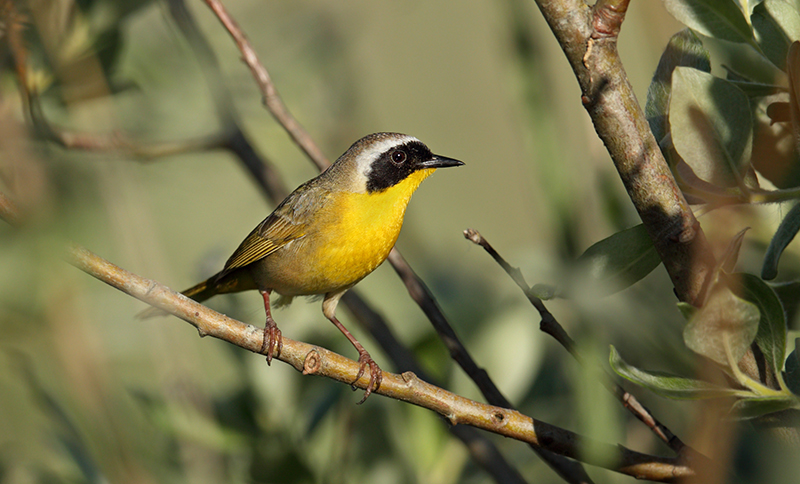Recognizing Birds: Warblers

Un texte de Jason Campbell
Paru dans le numéro Printemps/Spring 2022
Publié le : 4 mars 2022
Dernière mise à jour : 28 mars 2022
Les randos aux oiseaux sont bilingues et destinées à tous les niveaux d’amateurs d’oiseaux ! Bird hikes with Jason are bilingual and for all ages.

Hearing birds singing as they return to nest in spring is a thrill. Their voices suggest a lightness that contrasts with the cold, hardship of winter. Every spring I look forward to hearing the first warbler of the season.
Jewels
Warblers, paruline in French, are a group of birds that are a particular joy to hear and see. They are often referred to as jewels; they are small, delicate and display brilliantly coloured plumage. Their quick movements convey a fleeting quality that makes them hard to track with binoculars. Warblers occur only in the Americas, nesting in northern areas where there is an explosion of insects to eat in spring. In fall they migrate at night in mixed flocks to Central America, the Caribbean and South America.
Different Species of Warblers
There are fifty-three warbler species, thirty of which have been observed in Brome-Missisquoi. Each can be recognized by their unique song even without seeing them. The common yellowthroat is often the first that I hear in spring. It has a characteristic black mask for which it is named paruline masquée in French. It sings its “whichity-whichity-whichity” song often from a low perch among long grasses.
A good way to start observing is to learn to recognise warblers that are common in your surroundings. The chestnut-sided warbler can be observed in disturbed habitats, forests with young trees and roadsides. His song seems to say “pleased, pleased, pleased to meetcha” which is similar to the yellow warbler’s song that sounds like “sweet, sweet, sweet, sweeter-than-sweet.”
If you live in a wooded area, start by learning the songs of the ovenbird, black-throated blue warbler and black-throated green warbler. These are some of the most common warblers in the forests of our area. If in an area with many coniferous trees, learn the high-pitched song of the blackburnian warbler. You will be rewarded by spotting the blackburnian’s striking bright orange and black plumage as it sings from the treetops.
Learning their songs
Learning warbler songs can be done by listening to their songs on the internet or with a birding app on your mobile device. You can join a group to observe birds which helps to learn their songs and to improve your skills at spotting and recognizing birds in their natural habitat. Here are the bilingual birding walks that I guide Saturday mornings in the spring in Sutton. You are welcome to join us!
Rando aux oiseaux / Birding hikes (activité bilingue à Sutton)
30 avril 7 h à 10 h Stationnement Club de Curling – 26, rue Pleasant
7 mai 7 h à 10 h Stationnement Club de Curling – 26, rue Pleasant
14 mai 7 h à 10 h Hôtel Horizon (stationnement en bas à gauche) – 297, ch. Maple
15 mai 19 h à 21 h Stationnement Club de Curling – 26, rue Pleasant
21 mai 7 h à 10 h PENS poste d’accueil – 900, ch. Réal
28 mai 7 h à 10 h Stationnement Club de Curling – 26, rue Pleasant
4 juin 7 h à 10 h Hôtel Horizon (stationnement en bas à gauche) – 297, ch. Maple
11 juin 7 h à 10 h PENS poste d’accueil – 900, ch. Réal
18 juin 7 h à 10 h Stationnement Club de Curling – 26, rue Pleasant
Ces randonnées bilingues sont destinées à tous les niveaux d’amateurs d’oiseaux ! Apportez des jumelles et joignez-vous à nous pour observer les oiseaux à leur période la plus active de l’année ! Dons volontaires (suggestion de 15 $ par personne). Un abonnement ou un accès quotidien sont nécessaires pour les randos dans les sentiers du PENS. Réservez votre place à info@parcsutton.com ou 514-266-922
